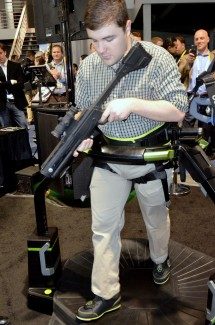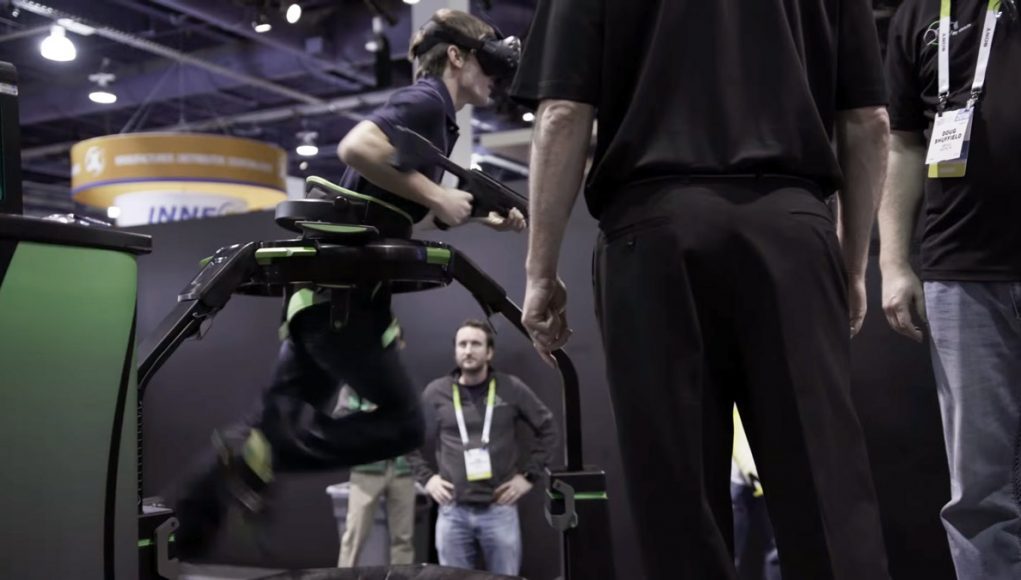Popular VR title Arizona Sunshine and two others are soon to get native support for the Virtuix Omni VR treadmill. Virtuix has also announced that the company has become a “formal hardware partner of HTC.”
 Arizona Sunshine [our review] is one of SteamVR’s top rated games, and soon it’ll be compatible with the Virtuix Omni, a VR treadmill which got its start after a successful 2013 Kickstarter. In addition to Arizona Sunshine two other SteamVR titles—horror game The Bellows and cartoon-FPS Quell 4D—have also committed to native integration with the device. The games add to several first-party titles that Virtuix has created for the Omni.
Arizona Sunshine [our review] is one of SteamVR’s top rated games, and soon it’ll be compatible with the Virtuix Omni, a VR treadmill which got its start after a successful 2013 Kickstarter. In addition to Arizona Sunshine two other SteamVR titles—horror game The Bellows and cartoon-FPS Quell 4D—have also committed to native integration with the device. The games add to several first-party titles that Virtuix has created for the Omni.

Virtuix also announced at the Vive Ecosystem Conference in China last week that it has become a “formal hardware partner of HTC.” Details on precisely what this means are limited, but Virtuix says it will “enable us to work more closely together with HTC on hardware and Omni content.” With the company’s shift toward the out-of-home VR sector, it’s likely that the move will help expose the Omni to businesses creating VR arcades and similar offerings where the VR treadmill could add to the VR experience.

Virtuix got its start in 2013 with a Kickstarter campaign that raised $1.1 million. Following the campaign, the company raised several rounds of investment, including participation by Mark Cuban following Omni’s appearance on the popular US reality investment show Shark Tank and was one of the first companies to offer a crowdfunding investment opportunity following eased investment restrictions in the U.S.
Though the company got an early start (well before Facebook bought Oculus even), traction in the in-home VR space (where the product was initially positioned) was slim, no doubt due to the high price point ($700), significant production delays, and lack of native game integrations.
At the end of 2016 Virtuix announced they were canceling international pre-orders after finding out that shipping the large 175 pound box overseas was “proven naive and unfeasible.” Though they couldn’t deliver the product to their international backers, the company fortunately refunded all canceled orders, with interest.
The Omni is no longer available for consumer purchase; with the cancellation of international pre-orders Virtuix has pivoted the Omni treadmill toward the out-of-home VR market, positioning it as a product to enhance the experience of commercial VR arcade spaces. There, the VR treadmill’s cost and size is perhaps more sensible, though supported content remains a challenge. The addition of a well-liked game like Arizona Sunshine is certainly a win in that regard, and perhaps a sign of more to come.







